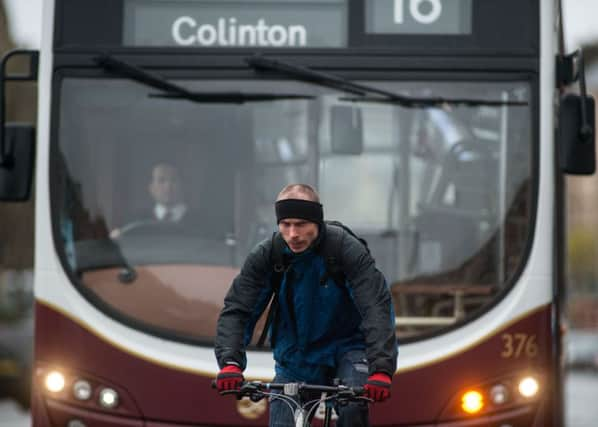Alastair Dalton: Are lanes best for Scots cyclists?


They often have the option of using quieter, if less direct, streets, but that doesn’t suit everyone, and cyclists believe they have as much right to be on the road as anyone else.
My thoughts come from personal experience on two wheels in the week that paths developer Sustrans announced £20 million for new cycling and walking routes across Scotland.
Advertisement
Hide AdAdvertisement
Hide AdThese are likely to include more cycle lanes on streets and segregated cycle sections between roads and pavements.
However, while they are better than nothing, both options have snags – and it does raise the question of whether such engineering is the answer.
A coloured cycle lane along the edge of the road is a help, but unless backed up with double yellow lines that are enforced, they can be a waste of paint.
Days ago, I encountered two vans from the same utility firm parked across a cycle lane in Glasgow, less than a mile apart. One was also on a double yellow, with two of its wheels on the pavement.
Between them, another parked motorist went one better by managing to also cover the zig-zag lines beside a pedestrian crossing – a further offence.
This kind of thoughtless, selfish behaviour has prompted Glasgow City Council to propose that double yellow lines are added to the entire route between the west end and city centre. We’ll see what difference that makes.
But even more problematic are segregated cycle lanes, where a kerb separates them from the road. An example is in Waterloo Street in Glasgow city centre, which is great in theory as a “safer” route west from Central Station to the former “Bridge to Nowhere” over the M8.
The main problem here is not cars – but pedestrians. So many people are programmed to just look or listen for motor vehicles, they treat the segregated lane as part of the pavement and walk blithely across in front of cyclists.
Advertisement
Hide AdAdvertisement
Hide AdThe segregated lane also gives cyclists a false sense of having priority, since they now have to wait even longer than before at every junction because bikes have been given separate sets of traffic lights.
Part of the problem is definitely cultural – there are still too few cyclists on many roads for everyone else to notice them. More promising are some of the Sustrans schemes such as giving over one side of a four-mile dual carriageway near Lesmahagow in South Lanarkshire to cyclists and walkers.
Elsewhere, the focus should be on strictly enforcing existing lanes so cyclists can have confidence using them, and better educating pedestrians about crossing segregated sections.